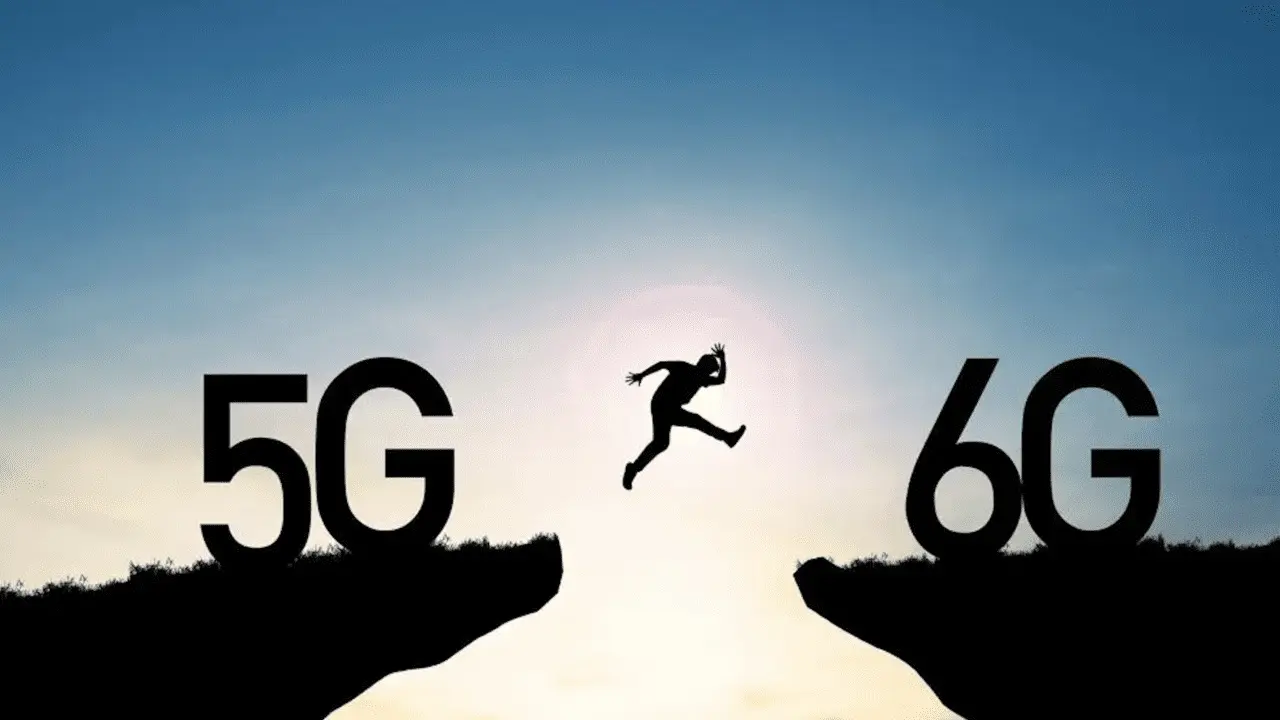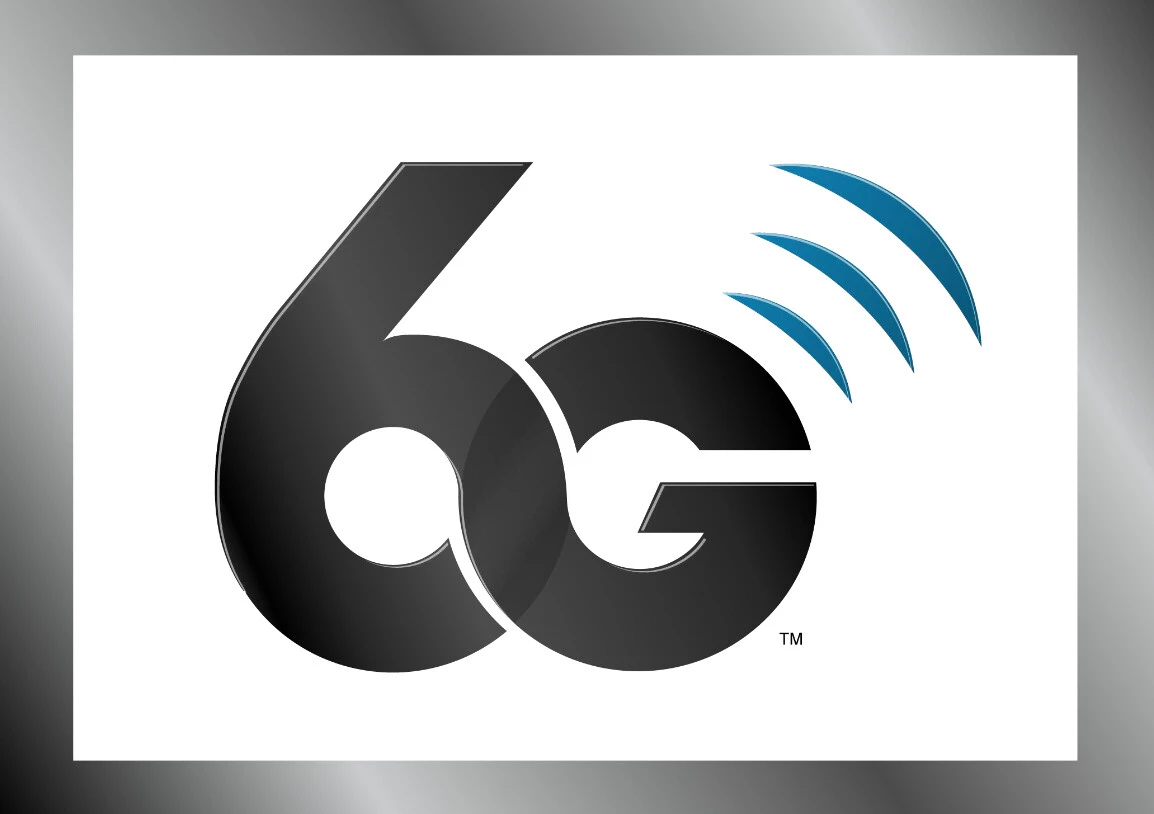6G: Everything about the technology and when the next generation of mobile networks will arrive

5G had not yet begun to be deployed when China began to talk about 6G and its intentions to have it ready by the end of this decade. For now, it has already shown an experimental 6G network on 4G and 5G equipment. South Korea assured that it would carry out the first 6G pilot project in 2026, and Spain has already approved different aids for this technology.
6G even has an official logo. But what is it really? What advantages will it bring over the 5G we have today? When will our mobile phones be connected to the sixth generation of networks? Below, we compile everything that is known so far about 6G to update the article as more data on this “future” technology comes out.
What is 6G?

| 6G logo approved by 3GPP
6G, as its name indicates, is the sixth generation of mobile connectivity. Just as 4G replaced 3G and 5G replaced 4G, 6G will come to replace 5G with higher speed and even lower latency. Before that, however, we will go through an intermediate state known as 5G+ or advanced 5G, which will hit the market this year. It is also known as 5.5G and Huawei claims that, thanks to MIMO technology, it will reach speeds of 10 Gbps.
Like 5G, one of the objectives of 6G is to further reduce latency in connections and significantly increase transmission speed. The 6G standard has not yet been defined and the spectrum bands that will be used for data transmission are unknown, but it is estimated that it will be commercialized in 2030. The first real use cases in this network could arrive between 2026 and 2028.
6G will bring with it advantages in different sectors of industry and the economy, such as medicine and the automotive industry. There are several fields that will clearly be boosted by this new generation of networks: extended reality and holographic communications; artificial intelligence, automated and interconnected; and energy efficiency, which will be at ultra-low consumption levels.
Extended reality, artificial intelligence and energy efficiency will benefit from the advantages of 6G
Samsung, which is already working with ARM to promote 6G, explained that this generation will require a spectrum with a contiguous ultra-wideband bandwidth ranging from hundreds of MHz to tens of GHz to enable new services. And for this reason, it proposes considering all the bands available for 6G, from the low band below 1 GHz, to the mid band in the 1-24 GHz range and the high band in the 24-300 GHz range.
According to the ITU-R M.2160 recommendation of the International Telecommunication Union, 6G aims to reach a peak speed of 200 Gbps and stable speeds between 300 and 500 Mbps. It also aims to lower latency to 0.1 ms and support a traffic capacity per area in a range of 30 Mbit/s/m² – 50 Mbit/s/m².
What advantages will 6G bring?
South Korea – with Samsung as a great ally – was one of the first countries to talk about the advantages that 6G will bring. The Asian country’s intention is that the first installations will already be able to reach speeds five times higher than the theoretical maximum of 5G, reducing latency to a tenth, that is, to 0.1 milliseconds. This will generate transmissions practically in real time, essential in sectors such as medicine or automobiles.
In a document published in 2020, Samsung also advanced that, with 6G, download and upload speeds will multiply, reaching peaks of up to 1,000 Gbps. This will support future multimedia formats and facilitate the exchange of data without noticeable delays in reception.
This early vision of 6G foresees an even more connected world with different realities (virtual, augmented and mixed) that will converge in a reproduction suitable for any screen, even if it is connected to a mobile network. One of the fields of application will be holography, which can be transmitted in real time, with high definition and without latency.

| Possible uses of 6G | Image: Samsung
In addition, the performance of the networks would be multiplied in all aspects (speeds, latency, connected devices, bandwidth, energy efficiency…), although the device architecture is still to be resolved. In this sense, the large European telecos (including Telefónica, Vodafone and Orange) have joined forces to ask Europe to deploy Open RAN networks in the old continent to lead 6G.
OPPO also prepared a first technical report on 6G where it assured that the next generation of networks will revolutionize the way in which AI learns, interacts and is applied. This will encourage 6G networks to self-optimize, self-manage and distribute resources intelligently (for example, in vehicles).
How is 6G different from 5G?

Currently, 5G has three main application scenarios: higher bandwidth, low latency, and wider connections. The idea is that 6G will manage to improve on all of these. It is estimated that this new generation will be able to multiply transmission rates up to 10 times, thus achieving speeds of up to one terabit per second.
In addition to being faster, 6G will be used to introduce new technologies in the field of telecommunications and will move towards terahertz (THz) frequencies. In fact, LG already managed to transmit data via the terahertz frequency at a distance of 100 meters in the summer of 2021. Later, it achieved wireless transmission and reception of 6G THz data in a frequency range of 155 to 175 GHz at 320 meters in the open air. And recently, it exceeded 500 meters.
That is, from the 20 Gbps speed of 5G, we will advance to 1 Tbps in 6G, and from the 1 ms latency of 5G, we will go to 0.1 ms in 6G. In addition, the sixth generation of networks will also be more efficient, will consume less energy and will have a greater capacity, so that it will support the simultaneous connection of more devices. In fact, in China, they have already managed to transmit 1 TB of data 1 kilometer away in just 1 second. And they have even tested it with a wireless connection at a terahertz (THz) frequency level.

| 6G improvements over 5G | Image: Samsung
To achieve all this, Samsung says that we will have to work in the terahertz frequency bands. 4G reaches 6 GHz, 5G reaches 110 GHz and with 6G the spectrum would have to be expanded to 3,000 GHz. This is a major technical challenge, since new antennas would have to be designed and advanced duplex technologies would have to be investigated. In addition, the company has highlighted the need to secure new bands for 6G commercial applications, since 5G networks will still be operational when 6G implementation begins.
Fujitsu, for its part, has confirmed that, in collaboration with DOCOMO and NTT, it will carry out tests using radio waves in the high frequency range (sub-terahertz waves) of 100 GHz and 300 GHz for use in 6G. The objective is to achieve a high-speed communication technology with radio wave propagation that is not affected by obstacles. It claims that 6G will provide communication speeds of more than 100 Gbps, ten times higher than those of current 5G networks.
The International Telecommunication Union’s ITU-R M.2160 recommendation speaks of a peak speed of 200 Gbps and stable user speeds in the range of 300 to 500 Mbps. It also claims that 6G will lower latency to 0.1 – 1 ms, triple spectrum efficiency compared to IMT-2020 and support a traffic capacity per area in the range of 30 Mbit/s/m² – 50 Mbit/s/m².
When will 6G arrive?

The Chinese Ministry of Industry and Information Technology confirmed at the end of 2018 that China had been researching 6G since March of that year. According to the forecasts at that time, the official development of this new connectivity in the Asian country would begin in 2020, but it would be necessary to wait until 2030 for its commercialization. That same year is the one set by Pekka Lundmark, CEO of Nokia, during his talk at the World Economic Forum 2022.
During the 6G Wireless Summit 2019, several mobile communications experts agreed to also point to the year 2030 as the launch date of 6G. South Korea, for its part, has already expressed its intention to commercialize 6G between 2028 and 2030, and to do so, it plans to start a pilot program in 2026 with an investment of about 452.7 million euros (625.3 billion Korean won).
Several manufacturers such as Samsung and Huawei have been working on developing 6G for some time, but they expect it to be commercialised by 2030
Ren Zhengfei, CEO of Huawei, already acknowledged in 2019 that they had been working in parallel on 5G and 6G for quite some time, and they have already put two satellites into orbit to carry out preliminary tests of 6G, but he expects its arrival by 2030. Ericsson, however, believes that we could start talking about a hypothetical basic 6G from 2027.

